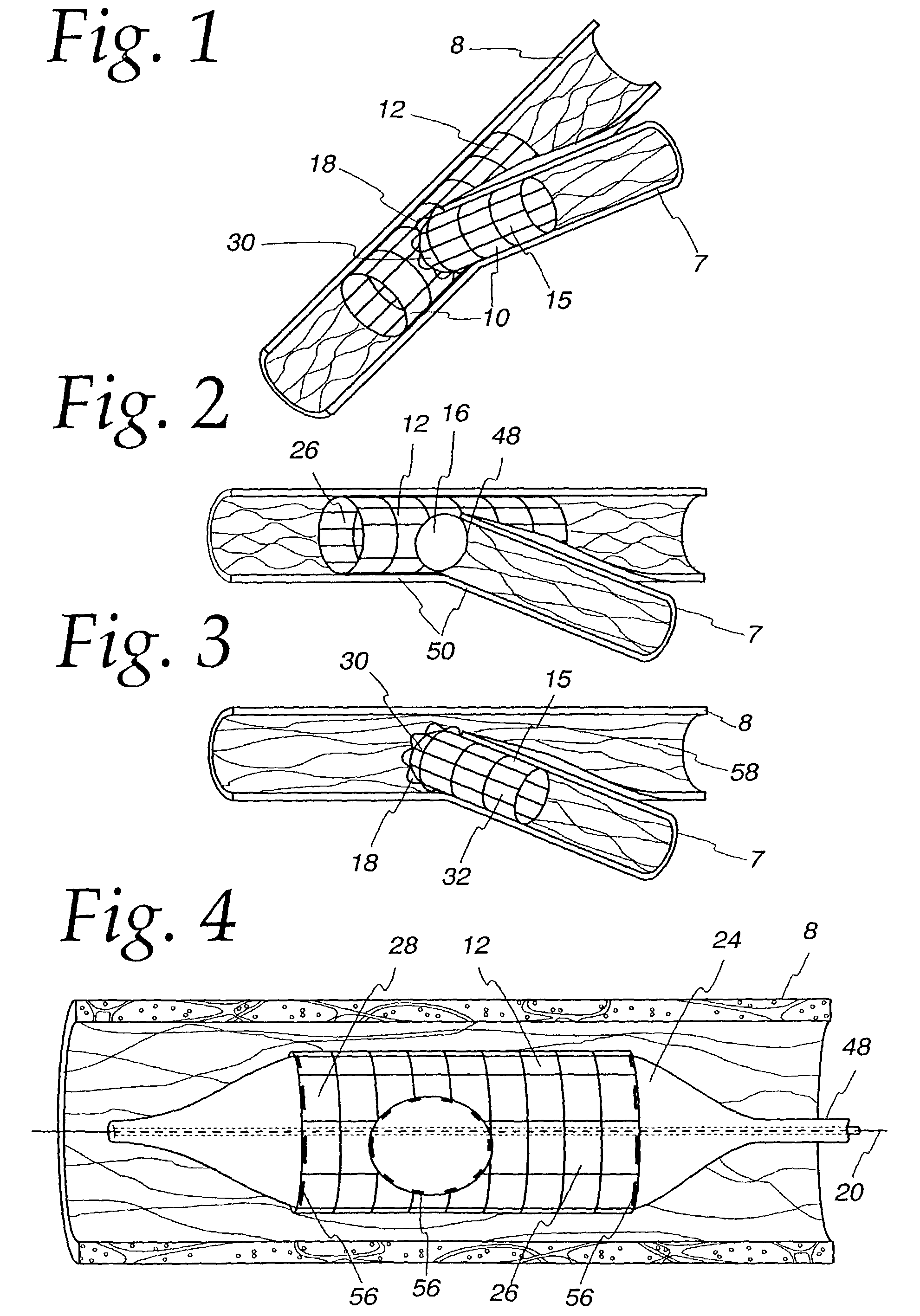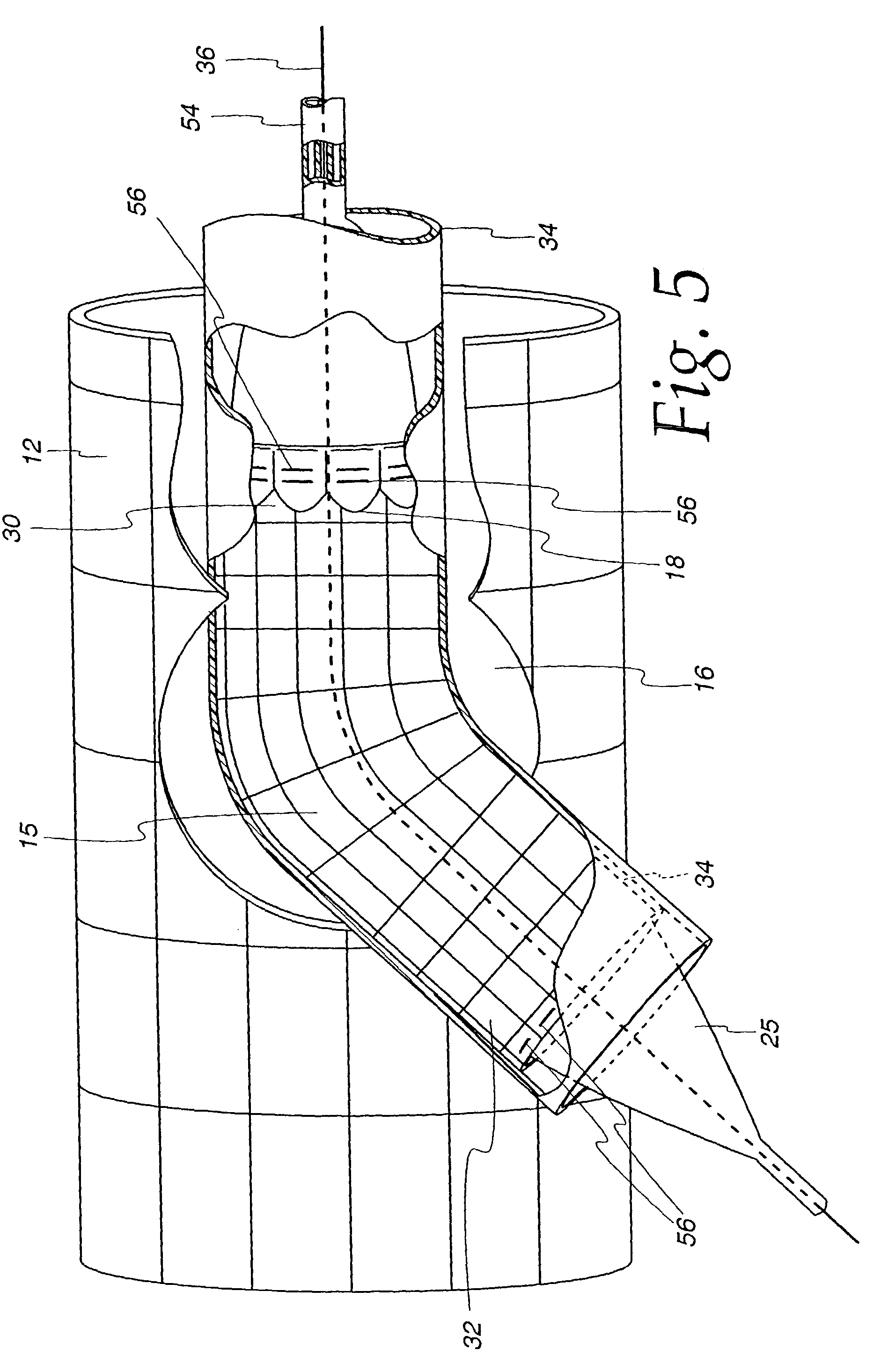Extendible stent apparatus
a stent and stent technology, applied in the field of stent apparatus, can solve the problems of limiting the ability to insert a second stent into the side branch, compromising the degree of patency of the primary vessel and/or its branches, and generally produced in a straight tubular configuration
- Summary
- Abstract
- Description
- Claims
- Application Information
AI Technical Summary
Benefits of technology
Problems solved by technology
Method used
Image
Examples
Embodiment Construction
[0039]The bifurcating double-stent apparatus 10 of the present invention comprises a generally cylindrical main stent 12 and a generally cylindrical branch stent 15, which are shown as fully dilated in a subject main vessel 8 and a subject branch vessel 7, as illustrated in FIG. 1.
[0040]The main stent 12 contains at least one generally circular side opening 16 located between the proximal end 26 and the distal end 28 of the main stent 12 (FIG. 2), which opening is positioned over and in registry with the opening 48 of a branch vessel in a vessel bifurcation 50, as shown in FIG. 2. The stent 12 and the side opening are imaged during imaging procedures either by constructing the stent of imageable materials or by placing markers 56 at appropriate locations, such as around the perimeter of the side opening 16 in the main stent 12, and at the proximal end 26 and distal end 28 of the main stent, as illustrated in FIG. 4.
[0041]As shown in the embodiment of the invention illustrated in FIG...
PUM
 Login to View More
Login to View More Abstract
Description
Claims
Application Information
 Login to View More
Login to View More - R&D
- Intellectual Property
- Life Sciences
- Materials
- Tech Scout
- Unparalleled Data Quality
- Higher Quality Content
- 60% Fewer Hallucinations
Browse by: Latest US Patents, China's latest patents, Technical Efficacy Thesaurus, Application Domain, Technology Topic, Popular Technical Reports.
© 2025 PatSnap. All rights reserved.Legal|Privacy policy|Modern Slavery Act Transparency Statement|Sitemap|About US| Contact US: help@patsnap.com



